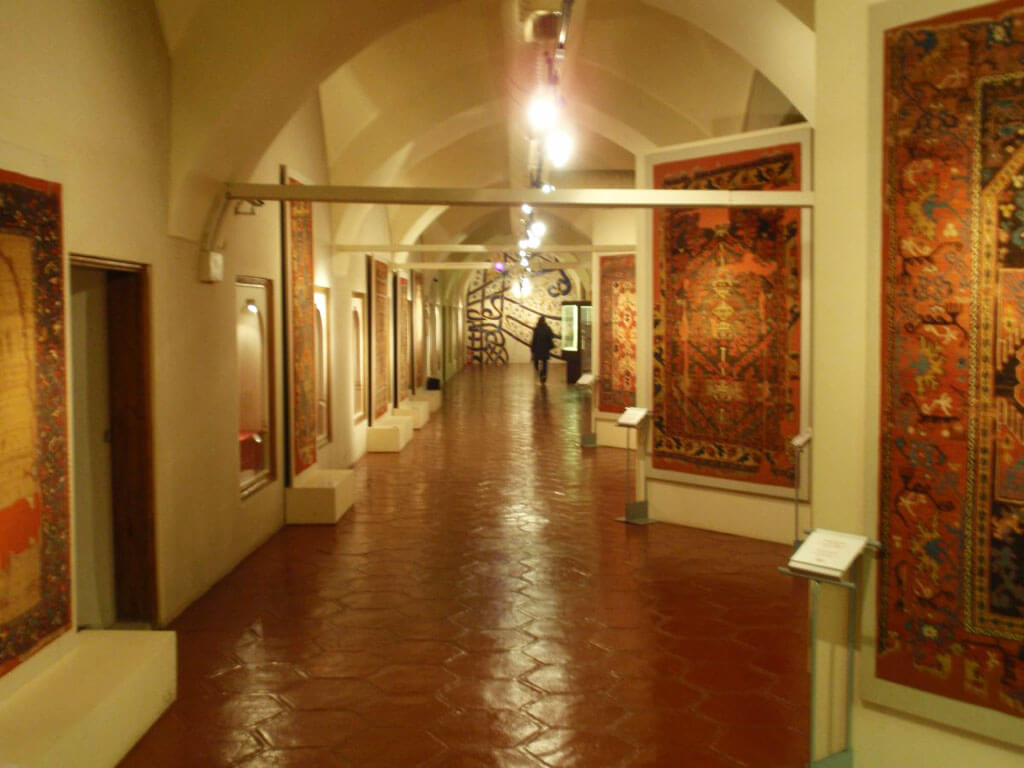The former Hippodrome once shook to the sounds of horses’ hooves and chariots in the Byzantine era, though today nothing but the outline remains of a stadium that held 100,000 spectators. The square today named Sultanahmet Meydani still remains the historic center of Istanbul and the Turkish and Islamic Arts Museum is a place to discover the cultural wealth of Islam and Turkey.
Housing one of the world’s largest and most important collections of carpets and prayer mats, it’s even a place to browse precious rugs before shopping for one in the Grand Bazaar.
Ibrahim Pasha, Grand Vizier to Suleiman the Magnificent
The site of the museum today is an unkind reminder of the ephemeral vagaries of favor and fortune. Ibrahim Pasha was a powerful advisor to the Ottoman’s greatest Sultan and this is the site if his former luxurious lodgings.
In a timeless warning that it never pays to outshine the boss, the sumptuousness of festivities and general revelry taking place in a palace equally splendid to Topkapi apparently irked Roxelana, wife of Suleiman and lover of intrigue.
Apparently, Roxelana was so incensed that Ibrahim rivaled the Ottoman ruler in pomp and that he supported the accession to the throne of a son of Suleiman whose mother was another former concubine, that she successfully endeavored to have Ibrahim strangled and his property seized. The building today is Istanbul’s most significant example of 16th-century civil architecture.
Carpet and Calligraphy Collections
Carpets, rugs and prayer mats are beautifully displayed with excellent annotations. There is a very large selection of rare Selcuk carpets, a period in history immediately pre-dating the arrival of the Ottomans.
Anatolian carpets covering a period of two hundred years from the 15th century take pride of place in the museum’s collection. These pieces were already greatly esteemed in Western Europe
and are sometimes referred to as “Holbein Carpets”, due to their appearance in the works of Holbein the Younger and paintings of other Renaissance artists. Additionally, carpets featuring geometric figures and patterns using the fascinating “kufi” script are on sho, as well as a collection of rugs of Persian and Caucasian provenance. Islamic calligraphy is represented by rare creations spanning a period of thirteen hundred years and from all over the Islamic world. Imperial edicts, seal, and warrants are all on the show. For those who love the highest of the Islamic arts, the Sakip Sabanci Museum will also be a rewarding journey.
Wood Carving, Ceramics and Stone Art
Wooden artwork richly inlaid with ivory, pearl, and tortoiseshell come from Anatolia and beyond. The Koran cases and bookrests are particularly richly decorated. Ceramic pieces from the early Islamic period are well represented, with a large number of works originating from extensive archaeological digs made between 1908 and 1915 in Samarra and Rakka, regions of modern-day Iraq and Syria. Those who appreciate ceramics should also view the collection housed in the Cinili Kosk or Tiled Pavilion of the Istanbul Archaeological Museum. The Turkish and Islamic Art Museum also displays interesting stone engravings from the Selçuk the period that depicts hunting scenes and mythical dragons, Griffin, and sphinxes.
Metalwork is represented by large candle holders, ewers, mirrors and door knockers, all of the exquisite workmanship. Finally, there is an ethnographic display that houses objects and furnishings of different regional groups in recreated surroundings, giving context and situation to various pieces.
Museum Location and Opening Hours
The museum is situated directly opposite Sultanahmet Camii, known in English as the Blue Mosque. It is a two-minute work from the Sultanahmet tram station. Opening hours are 09h30 to 17h30 from Tuesday to Sunday. The museum is closed on Monday.
















